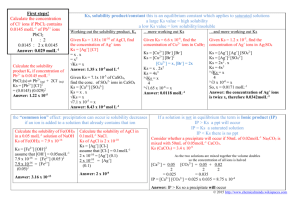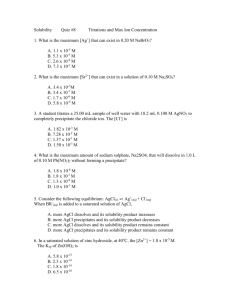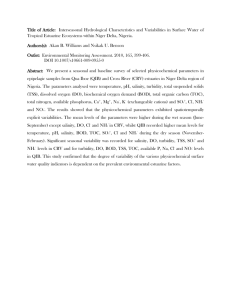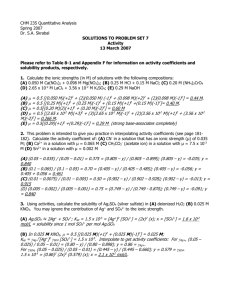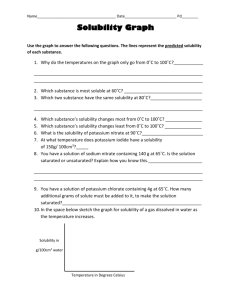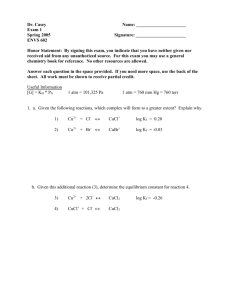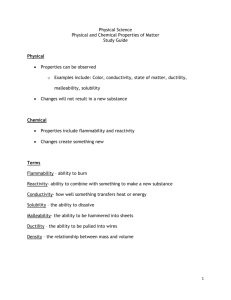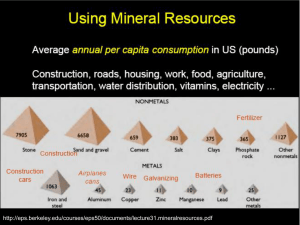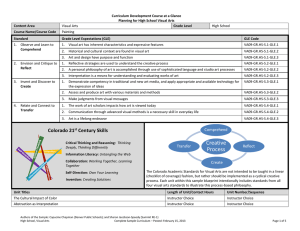Next Day 11-29-10 ore fluids
advertisement
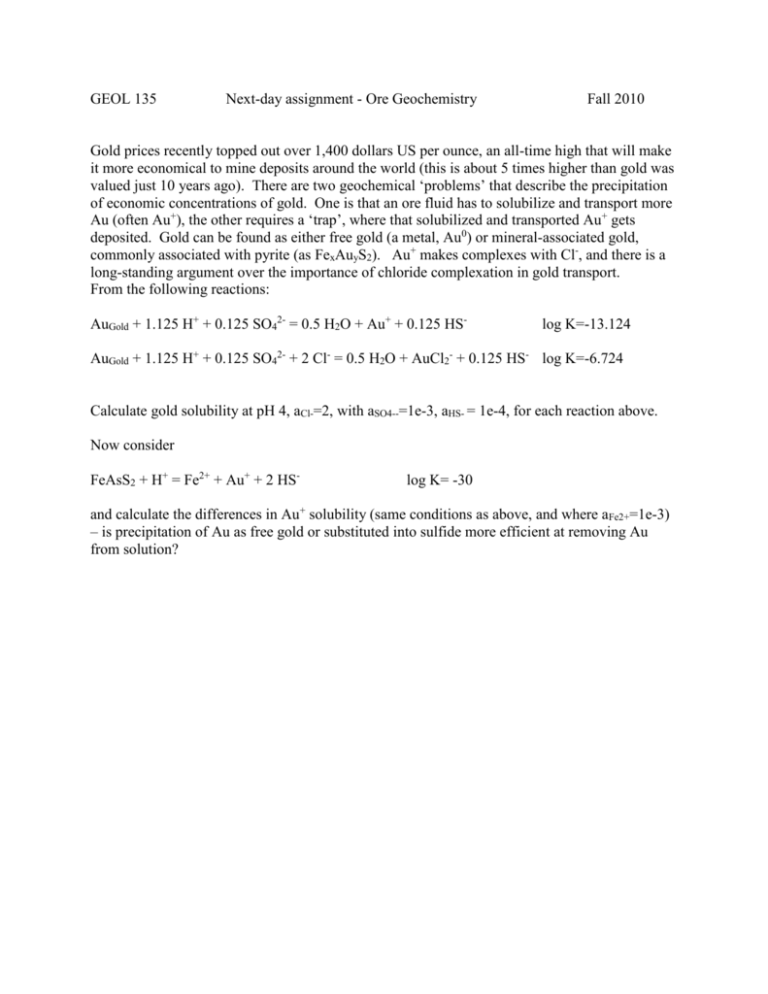
GEOL 135 Next-day assignment - Ore Geochemistry Fall 2010 Gold prices recently topped out over 1,400 dollars US per ounce, an all-time high that will make it more economical to mine deposits around the world (this is about 5 times higher than gold was valued just 10 years ago). There are two geochemical ‘problems’ that describe the precipitation of economic concentrations of gold. One is that an ore fluid has to solubilize and transport more Au (often Au+), the other requires a ‘trap’, where that solubilized and transported Au+ gets deposited. Gold can be found as either free gold (a metal, Au0) or mineral-associated gold, commonly associated with pyrite (as FexAuyS2). Au+ makes complexes with Cl-, and there is a long-standing argument over the importance of chloride complexation in gold transport. From the following reactions: AuGold + 1.125 H+ + 0.125 SO42- = 0.5 H2O + Au+ + 0.125 HS- log K=-13.124 AuGold + 1.125 H+ + 0.125 SO42- + 2 Cl- = 0.5 H2O + AuCl2- + 0.125 HS- log K=-6.724 Calculate gold solubility at pH 4, aCl-=2, with aSO4--=1e-3, aHS- = 1e-4, for each reaction above. Now consider FeAsS2 + H+ = Fe2+ + Au+ + 2 HS- log K= -30 and calculate the differences in Au+ solubility (same conditions as above, and where aFe2+=1e-3) – is precipitation of Au as free gold or substituted into sulfide more efficient at removing Au from solution?
